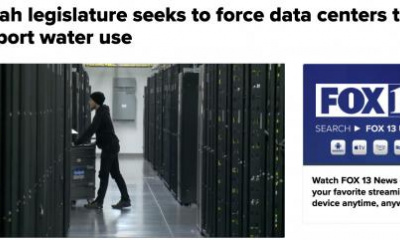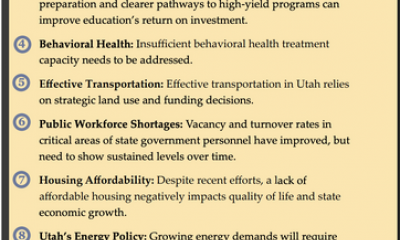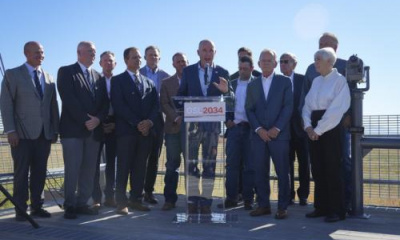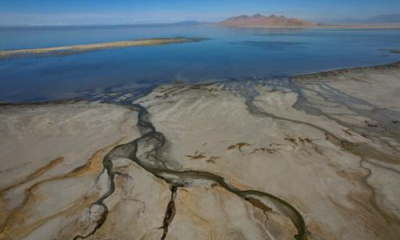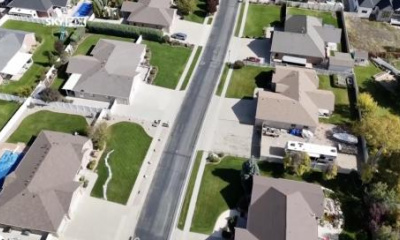Looking forward, a few things give Great Salt Lake Commissioner Brian Steed optimism about the near-term prospects of boosting the lake’s water level or at least holding steady.
Relatively high water levels in the reservoirs feeding the Great Salt Lake, higher groundwater saturation levels brought on by the wet 2022-2023 winter and weather forecasters’ early expectations for the coming winter all offer room for a glimmer of hope.
Steed expounded Wednesday on the state of the Great Salt Lake and efforts to bolster its water level in a video call with media in conjunction with the start of the Salt Lake County Watershed Symposium, where he was to discuss the matter at greater length. He didn’t say the lake’s woes are over by any means. That’s an effort that will take “years.”
But some indicators prompted an upbeat assessment looking at least to the coming year. Steed, appointed to the new post last May by Gov. Spencer Cox, is tasked with overseeing efforts to bolster the drying lake’s water level.
For one thing, the reservoirs feeding into the Great Salt Lake are currently at around 75% capacity, he estimates, up from the 45% range a year ago. “That’s actually really good news because if we continue to have a wet fall and winter, we should see less of that water captured in storage and more able to run off into the lake,” he said. “So we’re anticipating good things this year.”
Furthermore, the Great Salt Lake typically cycles through dry and wet periods looking at historical records, he said, and it’s currently in the midst of a wet cycle. “We hope that that trend continues,” Steed said.
Looking forward to the coming winter, Steed has been advised to expect “average” precipitation. Bill Anderegg, director of the Wilke’s Center for Climate Science and Policy at the University of Utah, said the latest National Oceanic and Atmospheric Administration forecast for the coming winter indicates there will be average or slightly above average precipitation. Anderegg is a member of the Great Salt Lake “strike team” that’s aiding Steed and he also took part in Wednesday’s video call.
Either way, coming off the heavy snowfall from last year, the forecasted precipitation “would actually be really good news,” Steed said, pointing to the same factors at play with the relatively full reservoirs. The snow that falls would be more likely to make its way to the Great Salt Lake given the relative saturation of the ground.
The Great Salt Lake dipped to its lowest recorded level late last year, less than 4,188.5 feet above sea level. But with last winter’s precipitation, the level of the South Arm of the lake rose to around 4,194 feet above sea level before falling around 1.9 feet due to evaporation, which is normal, Steed said.
The optimal lake level, he said, is between 4,190 and 4,202 feet above sea level.
The North Arm of the lake has only risen marginally above the 4,188.5-foot low, in part because of the release of water from the north side of the lake to the south side to help address high salinity. Those efforts paid off, according to Steed, helping reduce the salinty level in the South Arm from 180 grams of salt per liter of water to 140-150 grams of salt per liter. The high salt level had threatened the brine shrimp and brine flies in the South Arm.
The near-term prospects notwithstanding, a range of efforts continue or are under consideration to help bolster the lake’s level over the long haul.
Steed said a program meant to encourage agricultural water users to scale back consumption, the Utah Agricultural Water Optimization Program, has resulted in savings. Ag use is the single biggest factor that depletes the Great Salt Lake water level.
Now, though, officials need to figure out how to get the water that’s saved back to the lake. “I think you’ll see movement on that front during this legislative session,” Steed said.


